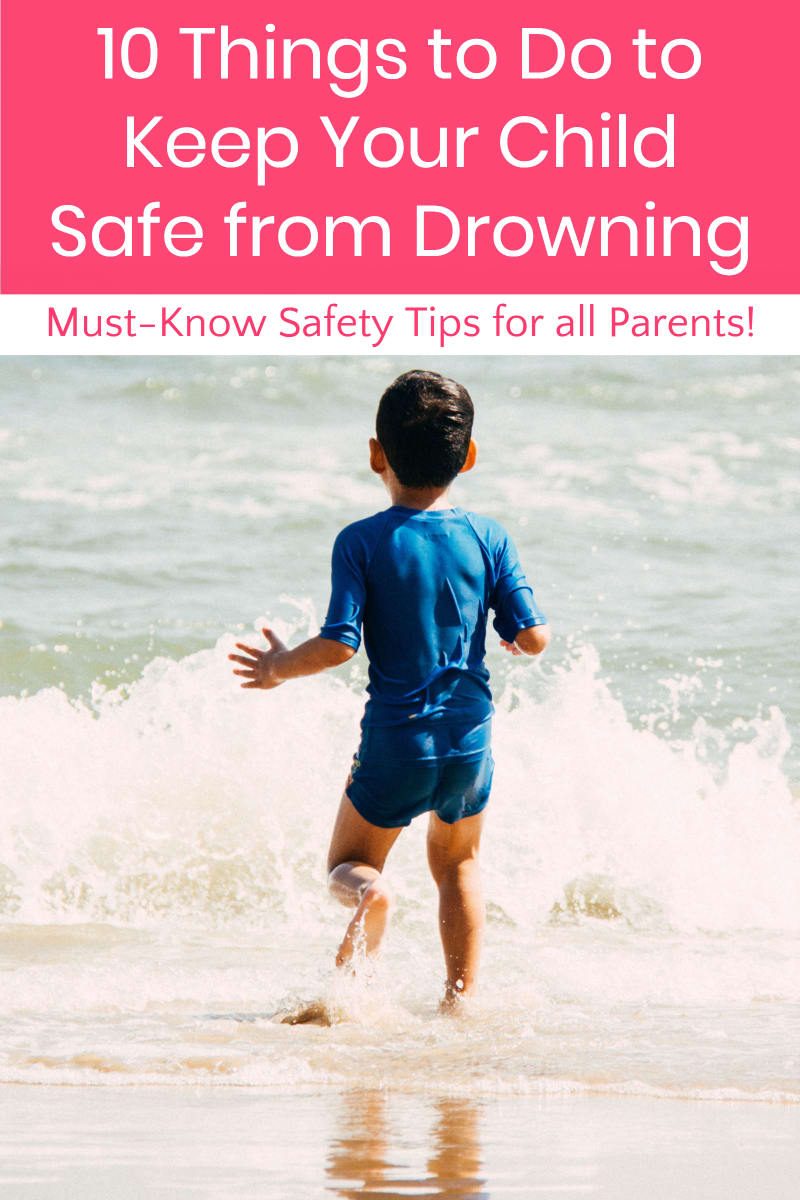Drowning is 100% preventable, yet nearly 300 children under the age of five drown in pools and spas every year. Today, we’ll talk about ten things you can do to keep tragedy from striking your loved ones this summer.

According to Eric Lupton, President of Life Saver Pool Fence, the number one way to prevent drownings is through proactive parent supervision, but most drownings occur when a child was thought to be in the house but slipped outside without anyone knowing.
*This post uses some affiliate links. If you make a purchase, I earn a small commission at no extra charge to you. Thanks!
10 Tips to Help Prevent Drowning
In 77% of accidental drownings, the child had been seen 5-minutes or less before being missed. Here are 10 tips for keeping your kiddos safe.
1. Install high locks
Put locks on doors and windows that are high and out of reach. Some drownings happen because a parent didn’t know their toddler figured out the door knob. Don’t forget sliding glass doors as well.
2. Get door and window alarms
Families should install simple contact alarms for doors and windows that lead to the pool. The ring-type alarm sounds every time a door opens, alerting an adult.
3. No doggy doors
Pet doors should be permanently sealed off. Toddlers are known to mimic their pets and may follow them right out the doggy door and into the pool area, putting both child and pet at risk.
4. Pool safety fence
One of the most reassuring steps is installing a pool fence. Fences should be at least 4′ tall and have a self-closing, self-latching gate. Mesh pool safety fences, like Life Saver Pool Fence, flaunt an effective layer of protection with a transparent and aesthetically pleasing look.
5. Pool alarms
Surface pool alarms will trigger a sound inside the home when the water’s surface is broken. However, a small child could quietly walk down the pool steps and slip under water without setting off the alarm, so they cannot be used alone.
6. Child immersion alarms
When you first move into a home, consider using a wearable immersion alarm, like the Safety Turtle, which triggers an alarm inside the house if the sensor gets wet. This is especially important when you are unfamiliar with the area.
7. Assign water watchers
When children are in the pool, assign one person as a designated Water Watcher. Active supervision means sitting close to the pool with your full attention on the child/children. Do a regular headcount never leave young kids unattended.
8. Clear out pool area after swimming
Always remove pool floats after swimming, especially toys that attract children to the water. Also, make sure to move any tables or chairs away from the pool fence so they cannot be used to climb over.
9. Swimming lessons
All children should receive swimming lessons. Some organizations even offer training for infants to roll over and float, and to swim to the edge of the pool in case they fall in.
10. CPR
Every adult should be trained in CPR. Check out community centers for classes. This training can make the difference between life, permanent disability, and death.
For more information on preventing drowning, click here.



Thank you for ssharing all this information about pool safety! If you’re going to install a pool, remember that an above-ground swimming pool is inherently safer. By default, most above-ground pools have a high entry point of 52 to 54 inches, which reduces the chance of accidental falls.